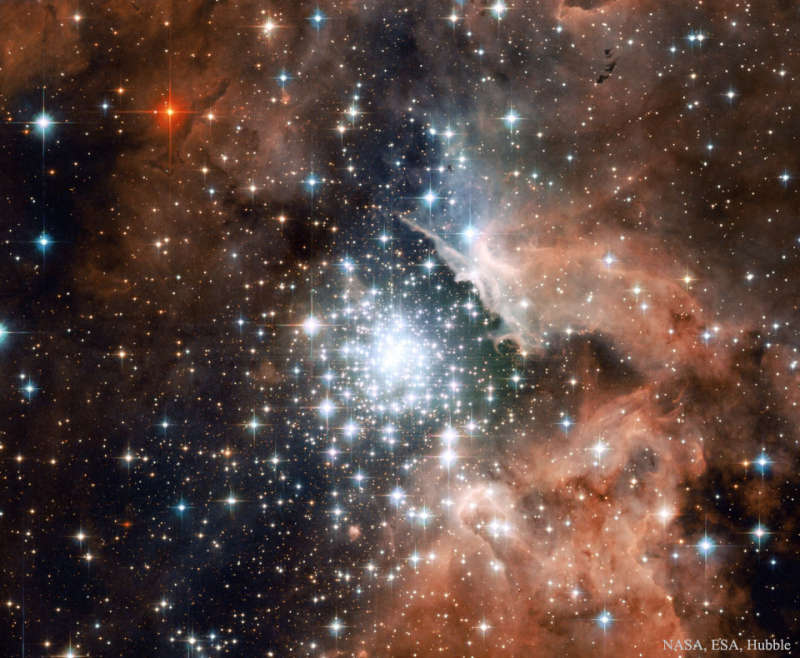Credit & Copyright: NASA,
ESA,
Hubble Heritage
(STScI/AURA)-ESA/
Hubble Collaboration;
Acknowledgment: J. Maiz Apellaniz (Inst. Astrofisica Andalucia) et al., & Davide de Martin (skyfactory.org)
Explanation:
A mere 20,000 light-years from the Sun lies
NGC 3603,
a resident of the nearby Carina spiral arm of our
Milky Way
Galaxy.
NGC 3603 is well known to astronomers as
one of the Milky Way's largest star-forming regions.
The central open star cluster contains thousands of stars
more massive than
our Sun, stars that likely formed only
one or two million years ago in a single burst of star formation.
In fact,
nearby NGC 3603 is thought to contain a convenient
example of the massive star clusters that
populate much more distant
starburst
galaxies.
Surrounding
the cluster
are natal clouds of glowing
interstellar gas and obscuring dust, sculpted by energetic
stellar radiation and winds.
Recorded by
the Hubble Space Telescope,
the image
spans about 17 light-years.
Acknowledgment: J. Maiz Apellaniz (Inst. Astrofisica Andalucia) et al., & Davide de Martin (skyfactory.org)
Follow APOD on:
Facebook,
Google Plus,
Instagram, or
Twitter
1999 2000 2001 2002 2003 2004 2005 2006 2007 2008 2009 2010 2011 2012 2013 2014 2015 2016 2017 2018 2019 2020 2021 2022 2023 2024 2025 |
Yanvar' Fevral' Mart Aprel' Mai Iyun' Iyul' Avgust Sentyabr' Oktyabr' Noyabr' Dekabr' |
NASA Web Site Statements, Warnings, and Disclaimers
NASA Official: Jay Norris. Specific rights apply.
A service of: LHEA at NASA / GSFC
& Michigan Tech. U.
|
Publikacii s klyuchevymi slovami:
star cluster - star formation - NGC 3603 - zvezdoobrazovanie - zvezdnoe skoplenie
Publikacii so slovami: star cluster - star formation - NGC 3603 - zvezdoobrazovanie - zvezdnoe skoplenie | |
Sm. takzhe:
Vse publikacii na tu zhe temu >> | |
